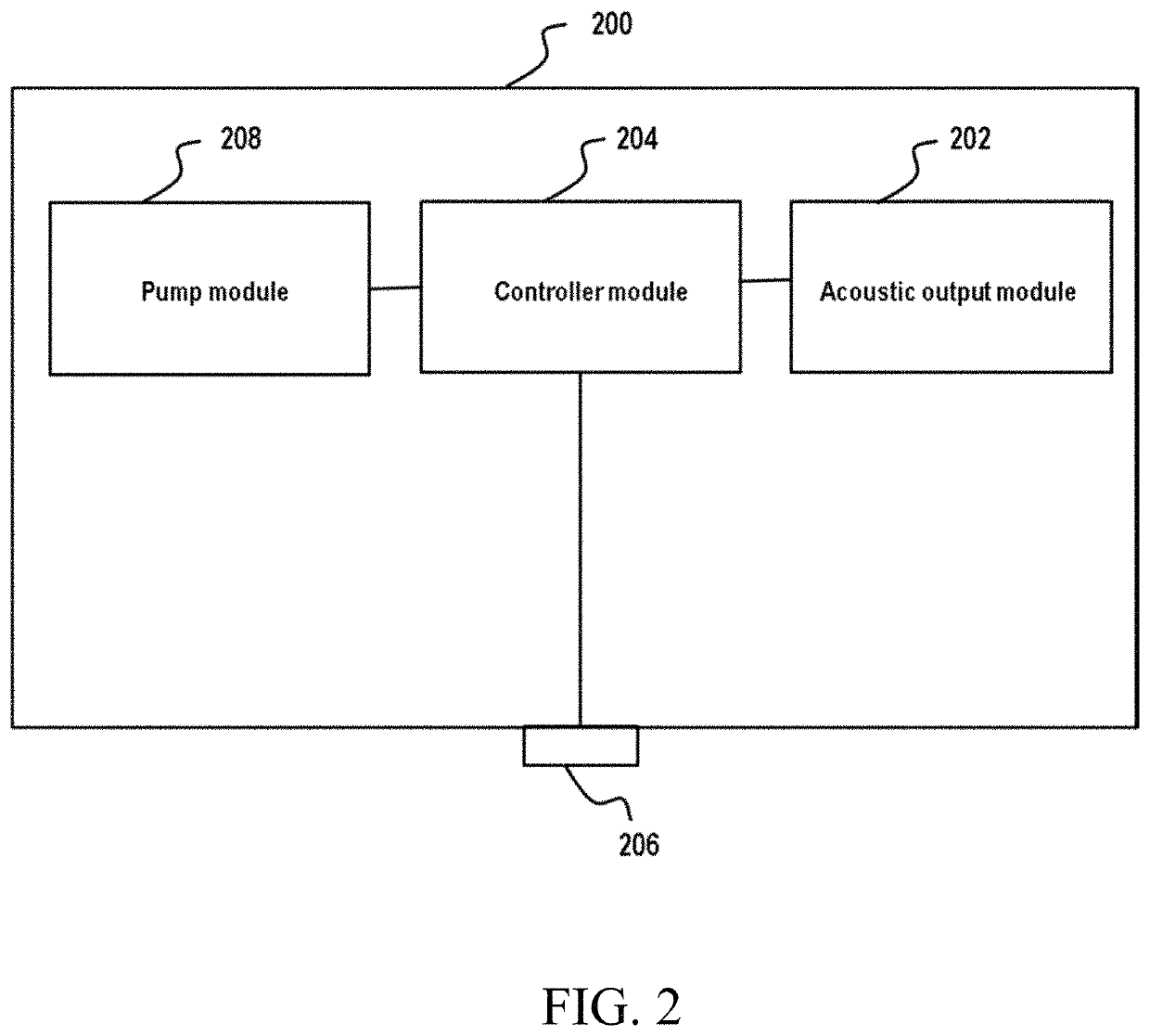Acoustic user interface
a user interface and acoustic technology, applied in the field of acoustic user interfaces, can solve problems such as difficulty in interpreting feedback correctly by users, hazardous consequences, and difficulty in managing insulin pumps,
- Summary
- Abstract
- Description
- Claims
- Application Information
AI Technical Summary
Benefits of technology
Problems solved by technology
Method used
Image
Examples
example 1
[0065]The acoustic signals evaluated in the following experiments consisted of the following tones: E7 (2673 Hz), F7 (2832 Hz), FIS7 (3000 Hz), G7 (3178 Hz), GIS7 (3368 Hz), A7 (3568 Hz), and AIS7 (3780 Hz) as sinus tones.
[0066]The signals evaluated were (with D(X) indicating the duration of the tone in X ms):[0067]EXECUTE (E7, D(200); F7, D(200); FIS7 D(200); G7 D(200); GIS7 D(400);[0068]START QUICK BOLUS MODE (E7, D(100); F7, D(100); FIS7, D(100); G7, D(100); GIS7, D(100); A7, D(100); AIS7, D(100);[0069]CANCEL (AIS7, D(100); E7, D(100); AIS7, D(100); E7, D(100)); AIS7, D(100);[0070]END OF FLIGHT MODE (AIS7, D(100); A7, D(100); GIS7, D(100); G7, D(100); FIS7, D(100); F7, D(100); E7, D(100); and[0071]BEEP (confirmation of pump increments in quick bolus mode): GIS(400) for each fifth, tenth, 15th, . . . increment, GIS7(200) for each intermediate increment.
[0072]22 Test subjects were elected, with a median age of 25 years (minimum age 18 years, maximal age 66 years); of the subjects, ...
example 2
[0073]In a first experiment, test subjects were asked to listen to the signals in arbitrary succession and to evaluate which function they would intuitively ascribe to the respective signal. After this, test subjects were made familiar with the actual assignment of the signals to the respective function and were asked to indicate on a scale of from −3 (unsuitable) to +3 (fully suitable), how suitable they evaluated the respective signal / function assignment. The results are shown in FIG. 3 and indicate that the selected signals were found to be very suitable by the test subjects.
example 3
[0074]In a second experiment, the test subjects of Example 2 were asked to listen to the various signals in arbitrary succession and in the context of various kinds of simulated ambient noise (airplane, canteen, or train). Test subjects were asked to provide an evaluation whether they were of the opinion that they perceived one of the signals and, in case yes, which of the signals they were of the opinion to have perceived. Success rate for all signals in tests for more quiet environments (silence and canteen) varied from 86%-97%.
[0075]For a specific task mode (programming of a quick bolus), an additional perception test was conducted. Test subjects (n=16) were asked to program a quick bolus and, in a second set of tests, additionally had to solve a visual task as distractor. As can be derived from FIG. 4, in interaction with a prototypical device the task was solved correctly in more than 90% of the tests, even in the presence of ambient noise and of a visual distraction. Thus, the...
PUM
| Property | Measurement | Unit |
|---|---|---|
| frequency | aaaaa | aaaaa |
| frequency | aaaaa | aaaaa |
| frequency | aaaaa | aaaaa |
Abstract
Description
Claims
Application Information
 Login to View More
Login to View More - R&D
- Intellectual Property
- Life Sciences
- Materials
- Tech Scout
- Unparalleled Data Quality
- Higher Quality Content
- 60% Fewer Hallucinations
Browse by: Latest US Patents, China's latest patents, Technical Efficacy Thesaurus, Application Domain, Technology Topic, Popular Technical Reports.
© 2025 PatSnap. All rights reserved.Legal|Privacy policy|Modern Slavery Act Transparency Statement|Sitemap|About US| Contact US: help@patsnap.com



